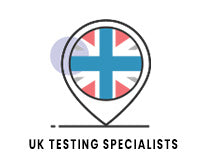Are Water Pipes Still a Problem?

Every now and again one of our customers asks a great question. Last week was one of those occasions. I was asked how many bad water tests results we see. If you’ve just paid out for a water test and received a clean bill of health then after the initial feeling of relief, you might well wonder if they all come back negative. Sadly, this isn’t the case. In this blog we’ll look at some of our data for lead which is a particular problem in some of the older housing in the UK.
6.2% of the samples in our study had potentially toxic levels of lead that were above the current UK limit of 10 ppb
Lead is a serious threat to public health, long term exposure is known to be associated with conditions such as hypertension, renal disease, digestive diseases, and cognitive decline. Lead is capable of crossing the placental barrier, harming the foetus, and is known to cause developmental delay and learning difficulties in children.
Lead (in the form of tetraethyl lead) was previously used as a petrol additive. Thankfully, leaded petrol has been banned in the UK since 1999 after the health and environmental impacts became clear. Historically, lead has been added to paint as a pigment and to accelerate drying. The UK has also banned the use of lead in domestic paint since 1992.
As lead is corrosion resistant, malleable, and ductile, it has been used in the manufacture of pipework ever since ancient times. As the toxic nature of lead has become better understood its use in plumbing has been banned in many countries. In the UK the use of lead pipes has been banned since the 1970s.
Despite the use of lead pipes in new houses being prohibited, millions of houses in the UK are still plumbed with dangerous lead pipes that pose a measurable risk to human health. Water companies commonly add orthophosphate to our drinking water as a plumbosolvency agent. The orthophosphate binds to lead pipes and helps prevent the harmful metal from dissolving into the water.
Adding tonnes of phosphate to our drinking water each year may be cheaper than replacing all of the country's lead pipes, but it’s not infallible and errors in dosing have previously been reported. The UK Drinking Water Inspectorate's first quarter report in 2022 found:
There were a small number of works where there was evidence that the company had ran out of phosphate, despite the zonal risk assessment for lead requiring phosphate to be dosed at all times as the main control measure.
Drinking Water Regulations for Lead in the UK
One common misconception is that drinking water is safe if the amount of lead is less than the amount stipulated in the drinking water standards, the World Health Organization has stated that there is no safe limit for lead. In the UK the drinking water standard for lead has reduced significantly as we learn more about its harmful effects.
The UK water supply regulations introduced in 1989 set the limit for lead to 50 ppb (µg/l), this was reduced to 25 ppb in 2003 and further reduced to our current limit of 10 ppb in 2013. In 2020, the European Parliament adopted the revised drinking water directive that commits the EU members to a limit of 5 ppb by 2036. While the UK has yet to formally commit to a 5 ppb standard it seems likely that we will.
Results from The Water Professor
In a recent study conducted at The Water Professor we compared the water test results of over 350 samples taken from around the UK. It’s important to note that our sample may not be representative of a random sample as people often purchase a water test if they suspect they may have a problem such as lead pipes.
6.2% of the samples we tested contained lead at levels higher than the current 10 ppb UK limit. 11.5% of the samples contained lead at concentrations greater than the new 5 ppb standard being adopted by the EU.
Lead found at concentrations of less than 2 ppb may be from natural sources - 76.7% of the samples in our study fell into this category, we therefore estimate that 23.3% of the samples we tested had been taken from properties containing lead pipes.
| Item | Percent |
|---|---|
| < 2 ppb | 76.7% |
| 2 - 10 ppb | 17.1% |
| > 10 ppb | 6.2% |

Unlike other common drinking water contaminants such as arsenic, the primary source of lead contamination is domestic plumbing - we therefore expect elevated lead levels to be evenly distributed across the country. When we look at a heatmap of average lead concentrations across the country we see fairly even distributions with some hotspots in more rural areas, potentially due to older average house ages.
If you wish to verify that you have lead pipes, or if the pipes are not accessible, we would recommend having your water tested. Our advice to anyone with elevated lead concentrations would be to replace the plumbing that’s causing the contamination, grants may be available to help with the cost. Sometimes replacing pipes isn’t an option and filtration may be an effective alternative, even a simple jug filter might help reduce the lead but effectiveness can vary considerably by brand.
The bottom line
Lead pipes remain a measurable threat to UK health. In our 2022 study 6.2% of the samples we analysed contained lead at concentrations above the UK limit of 10 ppb. Lead pipes are found throughout the country and are often found in older properties. The best way to know if you have elevated lead levels in your water is to have it tested using our Lead Water Test. Alternatively, for a more comprehensive analysis of your water covering a wide range of contaminants our Standard Test will provide you with answers.




















